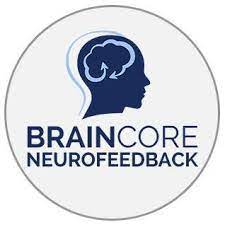In an age where peak mental performance and optimal vision are more critical than ever, neurofeedback is a groundbreaking technique to help individuals enhance their visual acuity and cognitive abilities. This innovative brain training method uses real-time monitoring of brain activity to improve overall brain health.
Whether you’re looking to improve your vision, sharpen your focus, or enhance your memory, neurofeedback provides a personalized approach to achieving your goals in North Royalton.
What is Neurofeedback?
Neurofeedback, or EEG biofeedback, is a non-invasive technique that observes brain activity to teach self-regulation of brain function.
This means that individuals can learn to modify their brain wave patterns through immediate feedback using visual or auditory signals, leading to improved mental performance and visual function.
How Does Neurofeedback Work?
Neurofeedback involves using sensors placed on the scalp to measure electrical activity in the brain. These sensors capture brain wave patterns and display them on a computer screen. Individuals can learn to modify their brain wave patterns through immediate feedback using visual or auditory signals.
This process helps to strengthen neural pathways and improve brain function over time.
Comprehensive Assessment with QEEG Brain Mapping
A key component of neurofeedback training is the comprehensive assessment using Quantitative Electroencephalogram (QEEG) brain mapping. QEEG brain mapping involves placing sensors on the scalp to record electrical activity in the brain. This data is then analyzed to create a detailed map of brain wave patterns, highlighting areas of dysregulation.
This assessment helps identify specific brain wave imbalances affecting cognitive and visual functions.
Brainwaves & Cognitive Wellbeing
Different types of brainwaves control various states of consciousness and mental activities. Dysregulation in these brain waves can lead to various cognitive and emotional challenges.
Alpha Dysregulation: Idle Processing
Alpha brain waves dominate during quiet, resting states and are crucial for relaxation and mental coordination. Dysregulation in Alpha waves can lead to idle processing, where the brain remains inactivity, affecting productivity and engagement.
When the nervous system is in a freeze state, this can manifest as procrastination, lack of motivation, and difficulties in transitioning between tasks.
Beta Dysregulation: Fast Processing
Beta brainwaves are associated with active thinking, problem-solving, and focused mental activity. However, problems with regulating Beta waves can lead to fast processing, which may cause anxiety, stress, sleep disorders, and hyperactivity. Individuals with Beta dysregulation often experience overthinking, restlessness, and difficulties in relaxing.
Delta/Theta Dysregulation: Slow Processing
Delta and Theta brainwaves are associated with deep relaxation, meditation, and the early stages of sleep. Difficulties with Delta and Theta brain waves can result in slow processing speeds, leading to difficulties in focus and attention. Individuals with Delta/Theta dysregulation may experience cognitive fog, daydreaming, and difficulty maintaining alertness.
Benefits of Neurofeedback for Vision Enhancement
- Improved Visual Acuity: Neurofeedback can help enhance visual acuity by training the brain to process visual information more efficiently. This can lead to sharper and clearer vision.
- Enhanced Eye Coordination: Improving brain function can enhance the coordination between the eyes and the brain. This results in better depth perception and visual tracking abilities.
- Reduced Visual Stress: Neurofeedback can help alleviate visual stress and fatigue. It promotes relaxation and reduces the strain on the visual system.
- Better Focus and Concentration: Improved brain function through neurofeedback can enhance focus and concentration. This ultimately leads to better performance in visually demanding tasks.
The Neurology-Vision Therapy Connection
Vision therapy is a specialized, non-surgical treatment program to correct and enhance visual and processing skills. It involves a series of exercises and activities tailored to strengthen the connection between the eyes and the brain, addressing issues such as lazy eye (amblyopia), eye coordination problems (strabismus), and binocular vision disorders.
By incorporating techniques like neurofeedback and QEEG brain mapping, vision therapy can be more precisely tailored to each individual's neurological patterns. This integrative approach targets the symptoms and addresses the underlying neurological causes, providing a more effective and comprehensive treatment for various visual disorders.
Schedule A Neurofeedback Consultation
If you are experiencing symptoms related to brainwave dysregulation, consider exploring QEEG brain mapping as a step towards a healthier, more balanced life.

